Best dye plants: 12 picks for making homemade natural dyes
Include the best dye plants in your garden and you can quickly grow and create your own natural, eco-friendly fabric dyes
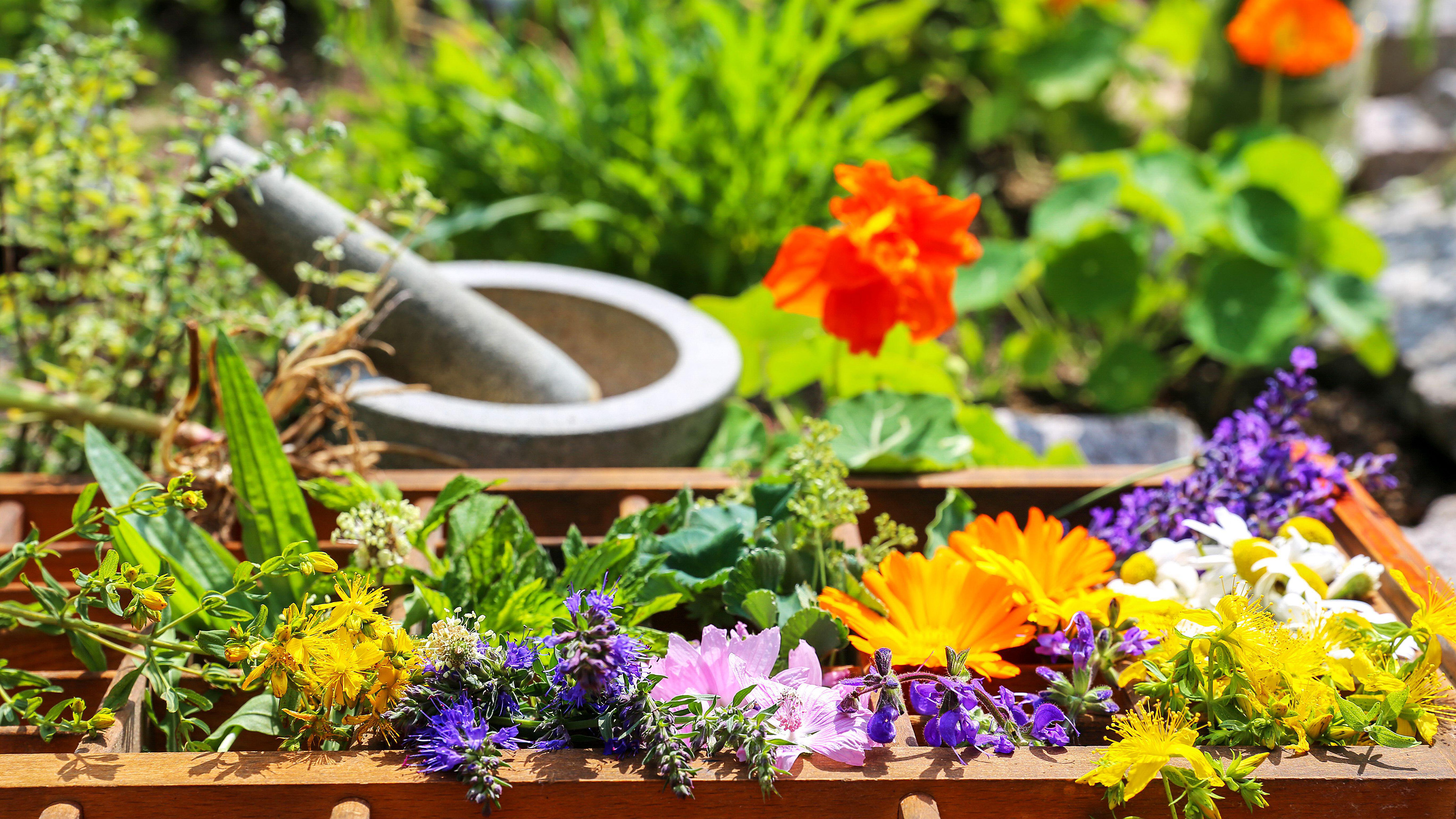
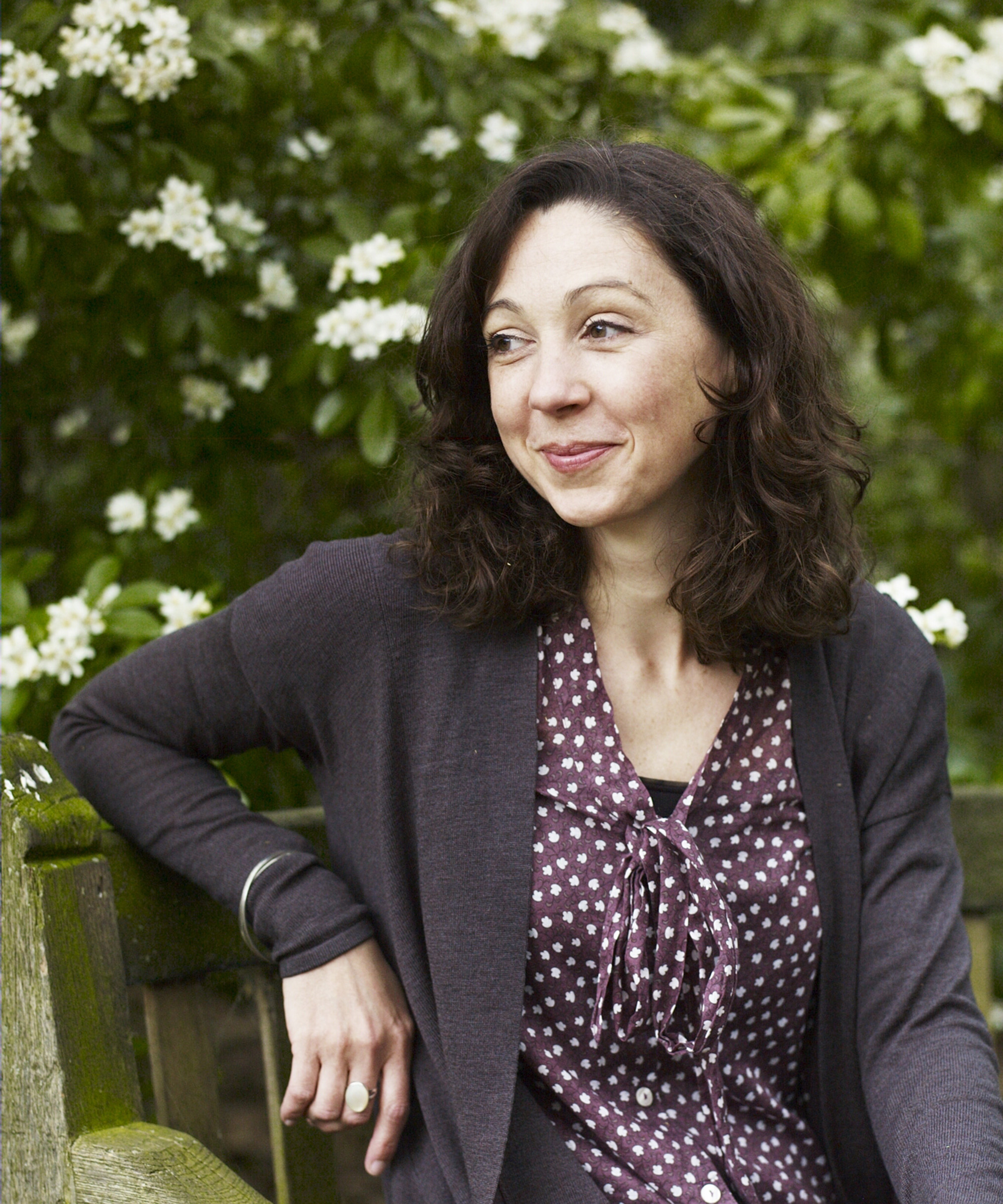
The trend of growing dye plants is well and truly taking off. Many of us have started trying to grow some of our own food, mindful of the benefits to our health, the environment, and our carbon footprint. From a pot of basil on a windowsill to rows of spuds on an allotment.
But did you know that it’s just as easy, if not even easier, to grow your own dyeing kit too? For centuries, plants such as woad, madder and saffron have been used to color cloth, producing wonderfully rich, complex hues that few synthetic dyes can match.
At the 2022 RHS Chelsea Flower Show in May, textile designer-turned-garden designer Lottie Delamain celebrates these unsung stars with her garden in support of fashion activism charity Fashion Revolution, solely featuring plants that can be used to make or dye our clothes.
‘So often in the West our clothes are made from petrochemicals and colored with toxic dyes,’ says Lottie. ‘I’d love it if the garden inspired people to think a bit more deeply about what's in their clothes and where they come from.’
As Lottie’s garden demonstrates, including dye plants in your flower bed ideas can be beautiful as well as highly useful, and making a dye can be as simple as boiling up some chopped leaves or roots in a pot of water. ‘It really is ridiculously easy to get started,’ says Lottie, ‘and the colors that come out are amazing.’
Bring a new dimension to your gardening with dye plants
Garden designer Lottie Delamain is passionate about us making plant choices which will give us a beautiful, bright garden but will also have other uses. Many of the dye plants she suggests below are also some of the best plants for pollinators.
1. Marigolds (Calendula officinalis)
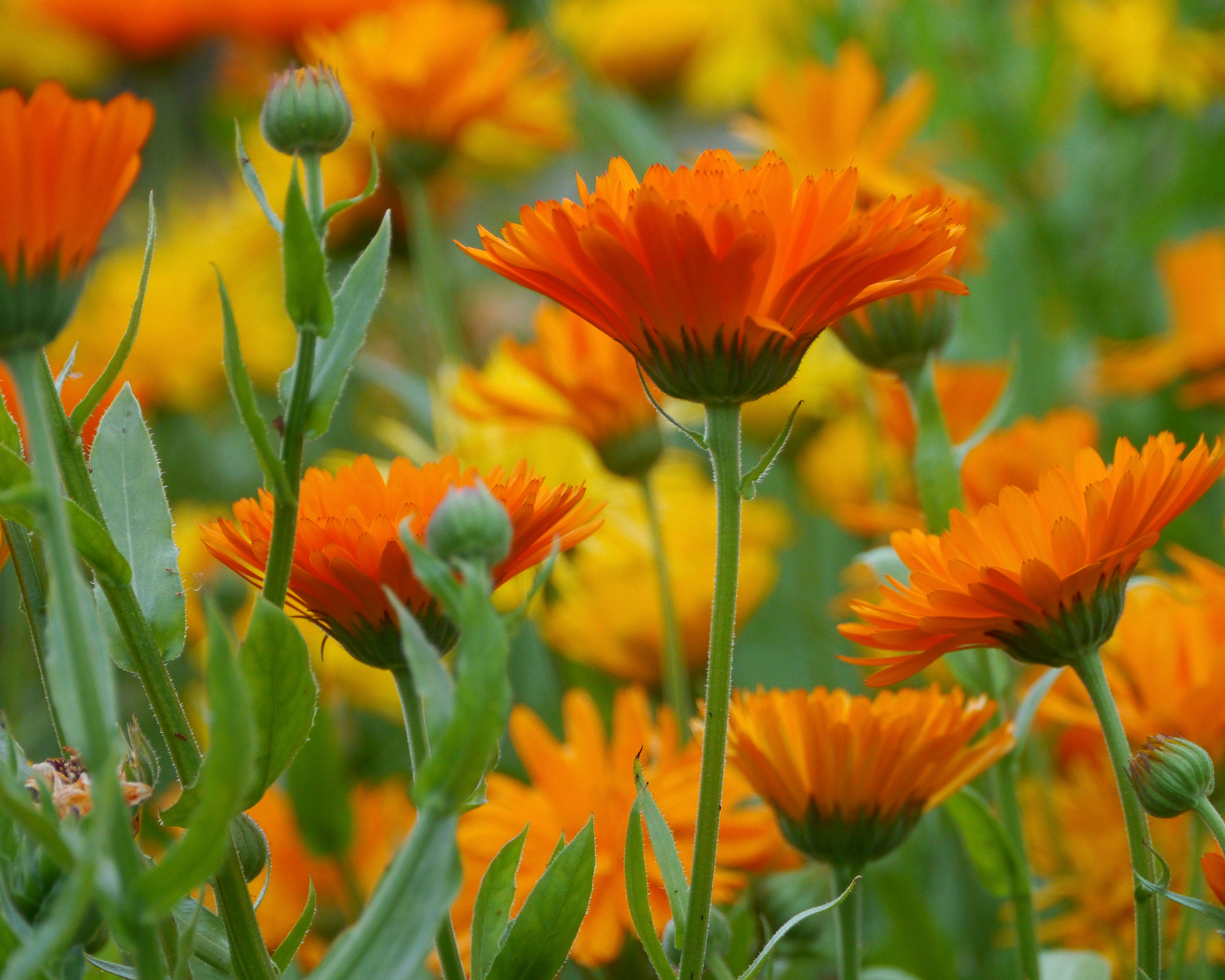
- Hardiness: USDA 2-11 (UK H7)
- Height: 2ft (60cm)
- Spread: 1.6ft (50cm)
- Best for: yellow dyes
Every garden should have a space to grow marigolds. Not only are they one of the cheeriest plants with their vibrant orange flowers, they’re great for attracting beneficial insects and work well as companion planting for tomatoes and beans, ensuring healthier crops.
They are edible and contain oils with anti-fungal, anti-inflammatory and anti-bacterial properties which have made the plant a staple of herbalists for centuries. Dyers love it for the beautiful yellow shades their petals produce.
If the tangerine tones are too bright for your garden, look out for the soft apricot cultivar ‘Sunset Buff’, or ‘Indian Prince’ which opens crimson. Sow these hardy annuals in spring, or in late summer for an earlier harvest.
2. Woad (Isatis tinctoria)
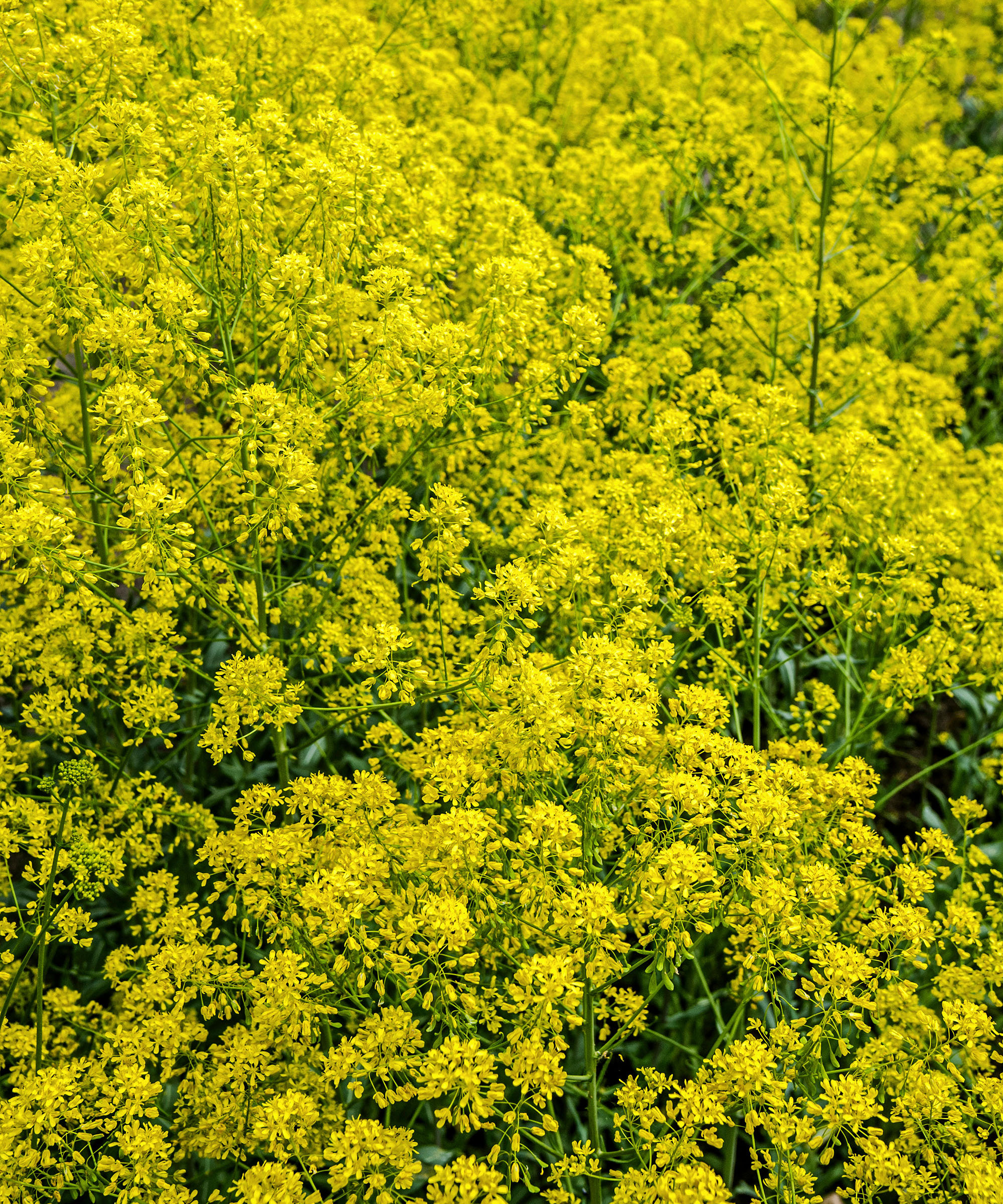
- Hardiness: USDA 6-9 (UK H7)
- Height: 6.5ft (2m)
- Spread: 1.6ft (50cm)
- Best for: blue dye
Before the introduction of indigo (Indigofera tinctoria) to the West, this European cabbage-family member was the main source of blue dye. Not that you’d necessarily guess – the tiny, star-like flowers are yellow and the leaves, which produce the dye, are green, though they do turn blueish with age.
If you're growing flowers from seed, sow thinly indoors in spring and plant out to a sunny spot when large enough to handle and when the threat of frosts has passed.
As a biennial it will form leaves the first year and flower in the second, producing copious seeds and seedlings which can become invasive. As with all brassicas, ensure you use crop rotation every couple of years to avoid the build up of diseases in the soil.
3. Foxglove (Digitalis purpurea)
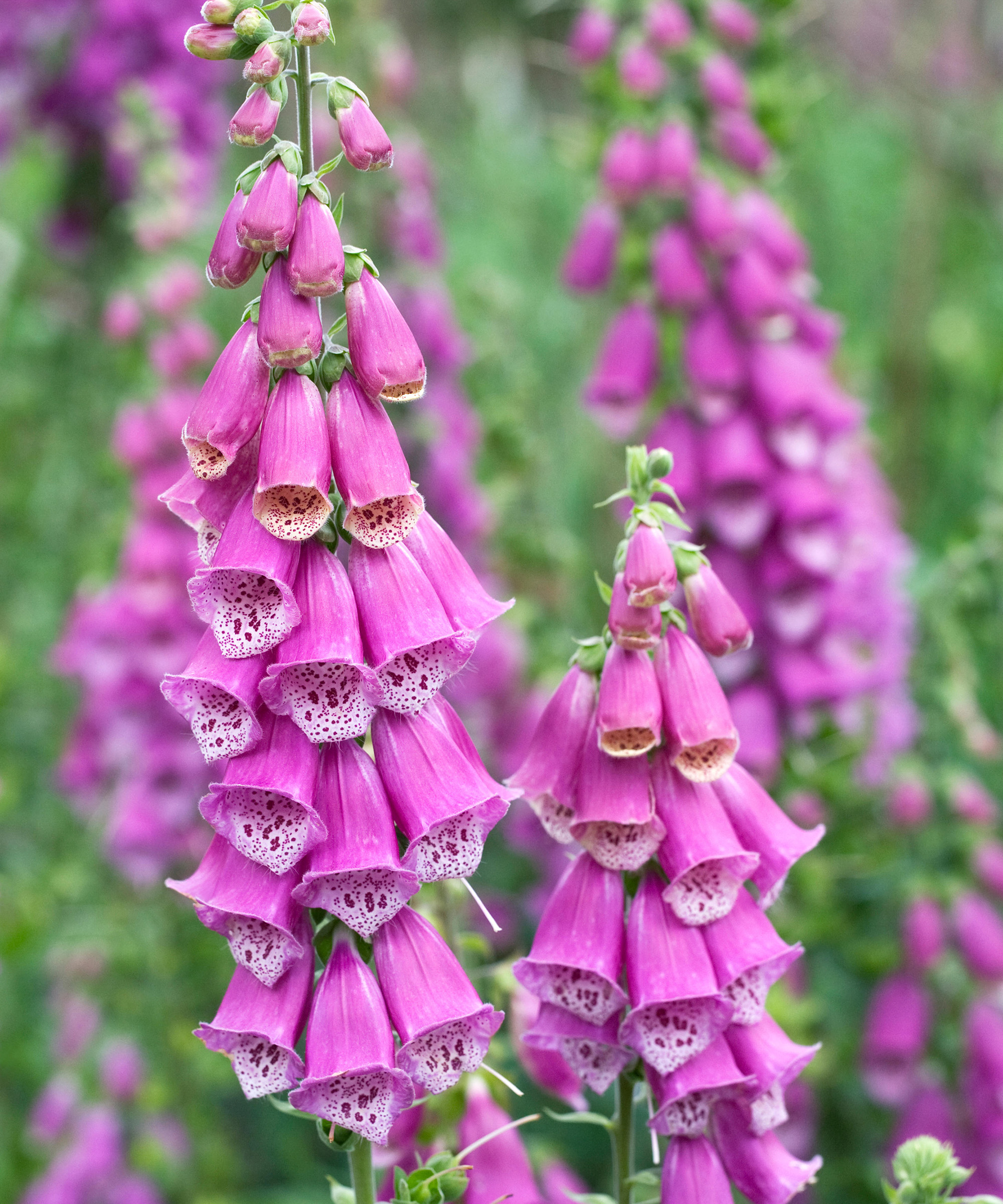
- Hardiness: USDA 4-8 (UK H7)
- Height: 3.9ft (1.2m)
- Spread: 2ft (60cm)
- Best for: green dye
Very easy to grow, these tall self-seeding biennials add a touch of romance to the garden and are one of the best cottage garden plants. Sending up tall, elegant spires of bell-shaped flowers, they are a magnet for bumblebees. Foxgloves are happy in full sun or part-shade in any soil, though they dislike very wet or very dry conditions.
There are a huge number of cultivars available including ‘Snowy Mountain’, a white form with burgundy-speckled throats; ‘Dalmation Peach’, a shorter variety with coral-pink bells; and ‘Lemoncello’, with pale yellow flowers. Both flowers and leaves can be used to produce a beautiful green dye – though remember to wear gloves as all parts of the plant are toxic.
4. Dyer’s chamomile (Anthemis tinctoria)
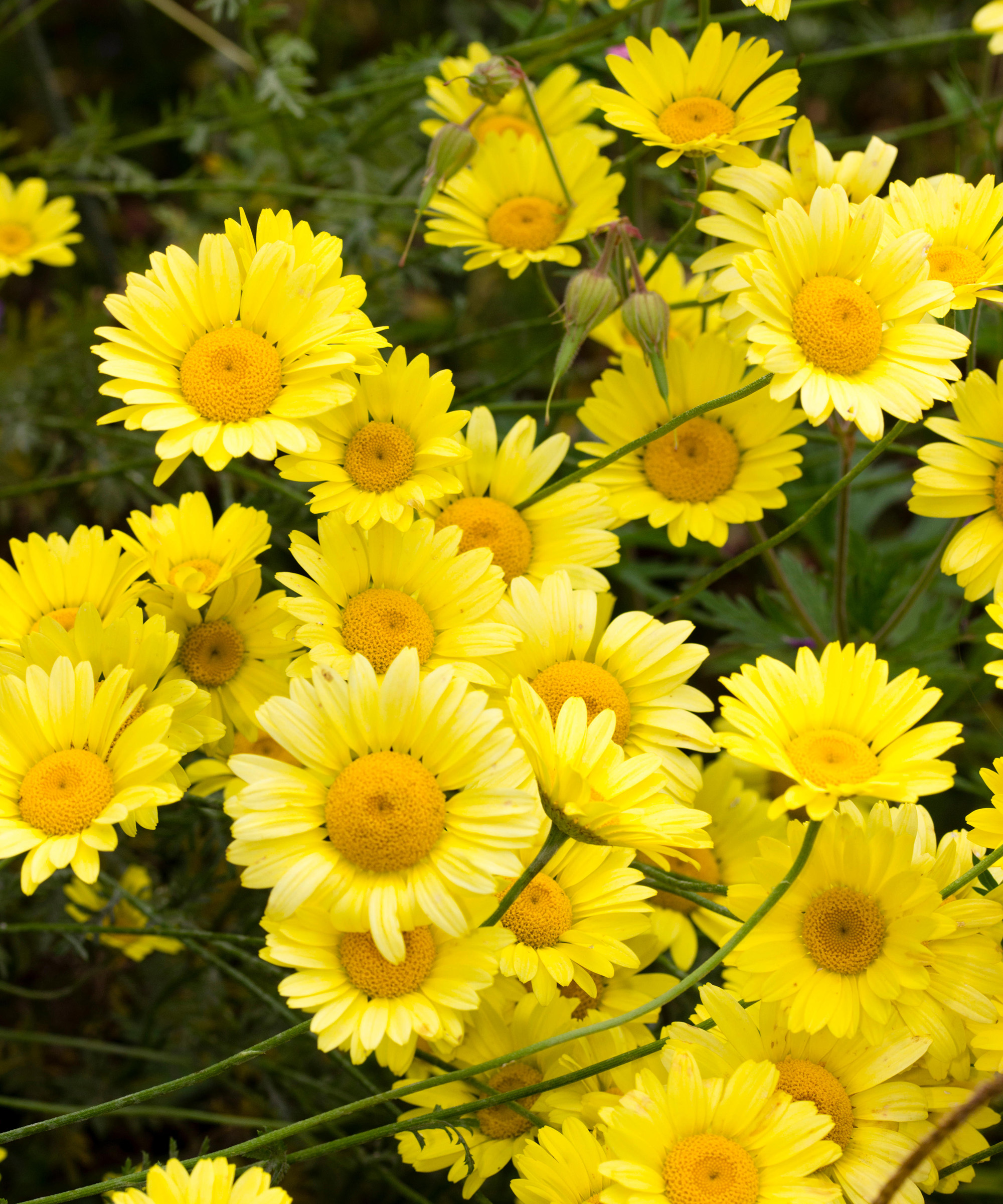
- Hardiness: USDA 4-6 (UK H6)
- Height: 2ft (60cm)
- Spread: 2.6ft (80cm)
- Best for: warm yellow dye
Ideal for brightening up a garden border or a patio pot-plant display, this clump-forming perennial produces masses of golden-yellow daisy-like flowers above finely cut, aromatic foliage. Good garden varieties include A. ‘E.C. Buxton’ which has paler flowers than the species and the fabulously named ‘Sauce Hollandaise' which is paler still.
It needs good drainage to thrive. Deadheading flowers regularly will extend the flowering season (which can go on for months) and give you plenty of yellow flowers to harvest for your dye. Use fresh or dried to produce a beautiful warm yellow.
The plant can also be grown as an annual – to harvest the seeds, dry the wilted flower heads for two to three weeks when the seeds will be easier to pick out.
5. Dyer’s tickseed (Coreopsis tinctoria)
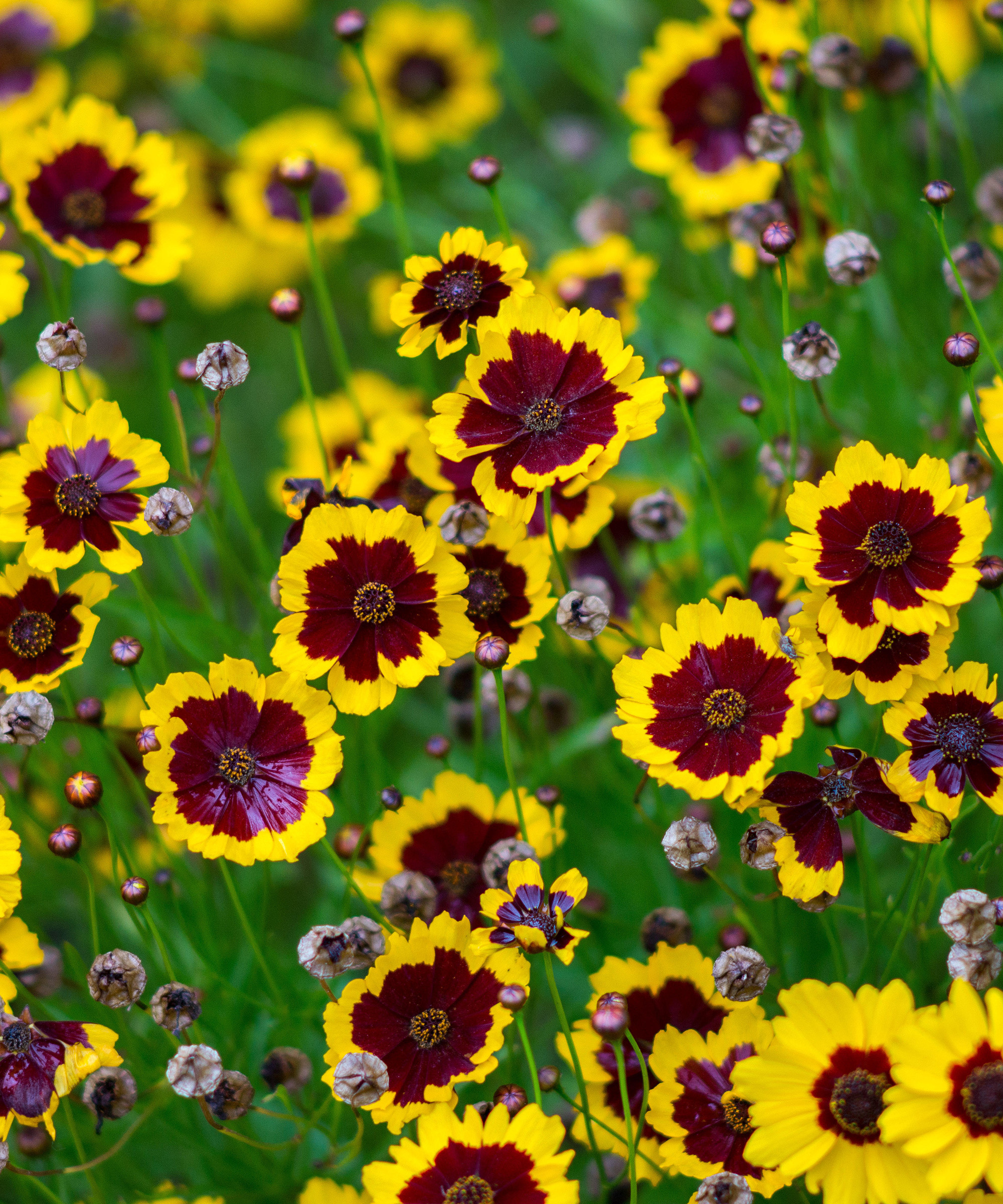
- Hardiness: USDA 2-11(UK H6)
- Height: 2.5ft (75cm)
- Spread: 1.6ft (50cm)
- Best for: orange dye
Producing masses of jolly yellow and red daisy-like flowers on branching stems, this annual tickseed is easy to grow, has a long flowering season and is much-loved by bees and butterflies.
A native of the North American prairies, it works well in meadow plantings; cottage gardens and mixed in with different types of ornamental grass as well as in pots. Slugs are partial to this plant so sow seeds indoors in a warm place and pot on until they can be planted out after all danger of frost has passed.
Harvest the flowers and then simply steep in boiling water to produce a rich orange dye. Other cultivars to try include C. ‘Mahogany’, an all-red form, and semi-double variety C. ‘Roulette’.
6. Cornflower (Centaurea cyanus)

- Hardiness: USDA 2-11 (UK H6)
- Height: 3.3ft (1m)
- Spread: 1ft (30cm)
- Best for: bluey-purple dye
‘Bachelor's buttons’, ‘blue bonnets’, ‘haw dods’ and ‘corn binks’ are just some of the names for these pretty annuals, once a common sight in cornfields and ideal if you want to know how to plant a wildflower meadow.
Today they are most often grown as an ornamental in the garden but they have many more uses too being both edible flowers, medicinal (traditionally used for eye problems), a good florist’s flower (with a long vase-life) and producing a beautiful bluey-purple dye.
In spring, sow seeds direct in a sunny spot where they are to flower. Harvest the flowers to make the dye but be sure to leave some to produce seed for the birds, who love it.
7. Dyer’s Weld (Reseda luteola)
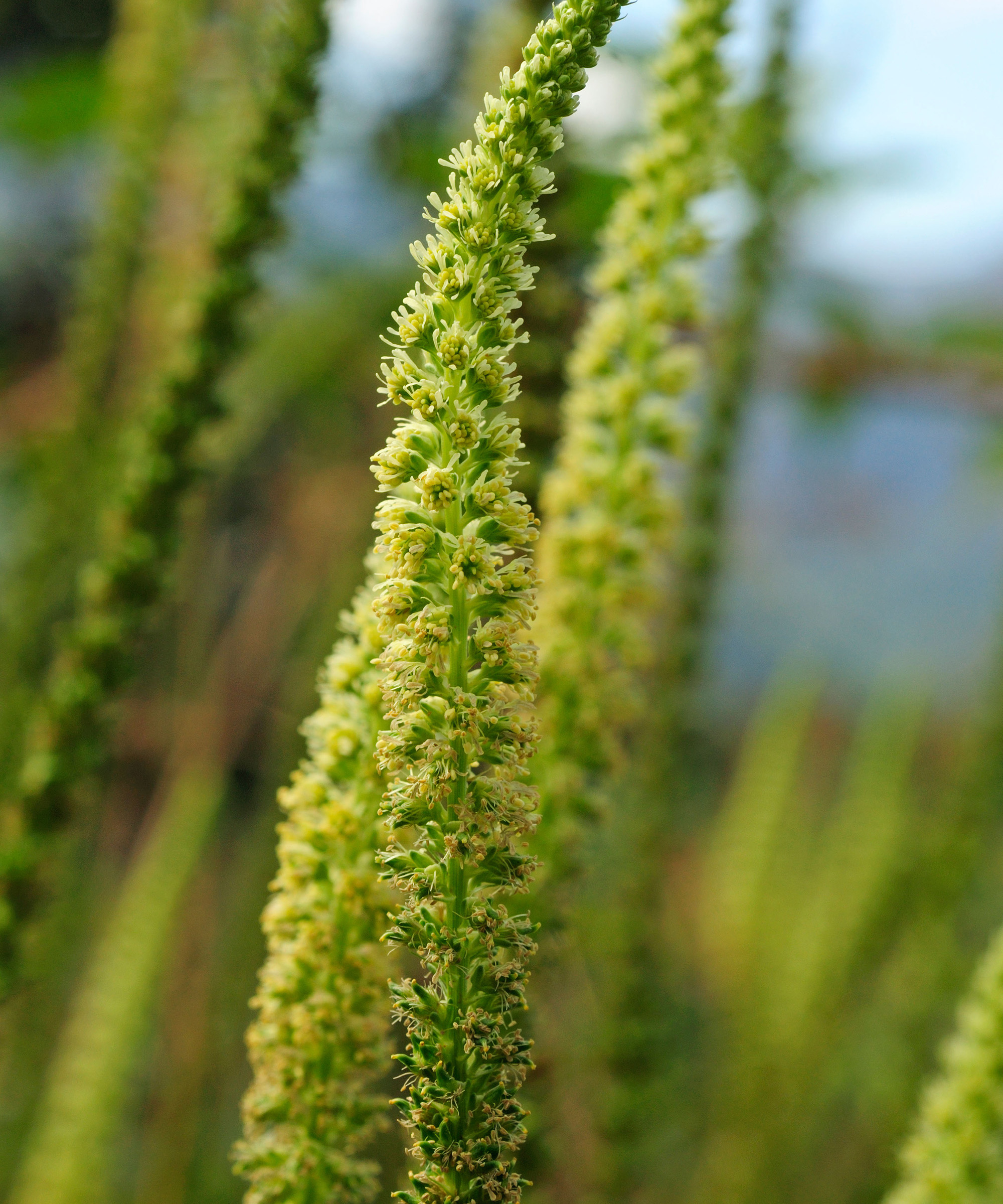
- Hardiness: USDA 5a-9b (US H4)
- Height: 4.9ft (1.5m)
- Spread: 1.6ft (50cm)
- Best for: yellow dye
One of the oldest dye plants in cultivation, this deliciously scented plant is native to Europe and western Asia and grows best on poor, alkaline soil types – indeed it is often found growing wild on wasteland.
Also called dyer’s rocket, dyer’s weed and yellow weed, it bears tall, slender spikes of tiny yellow flowers – excellent for pollinators – from a basal rosette of narrow, wavy leaves. Weld doesn’t like being moved so try scattering seed onto a prepared bed in late spring, and don’t cover with soil as the seeds need light to germinate.
Water as needed. Harvest just after they begin to flower the following year – flowers, seeds, leaves and stalks will all produce a wonderful yellow dye.
8. Cow Parsley (Anthriscus sylvestris)
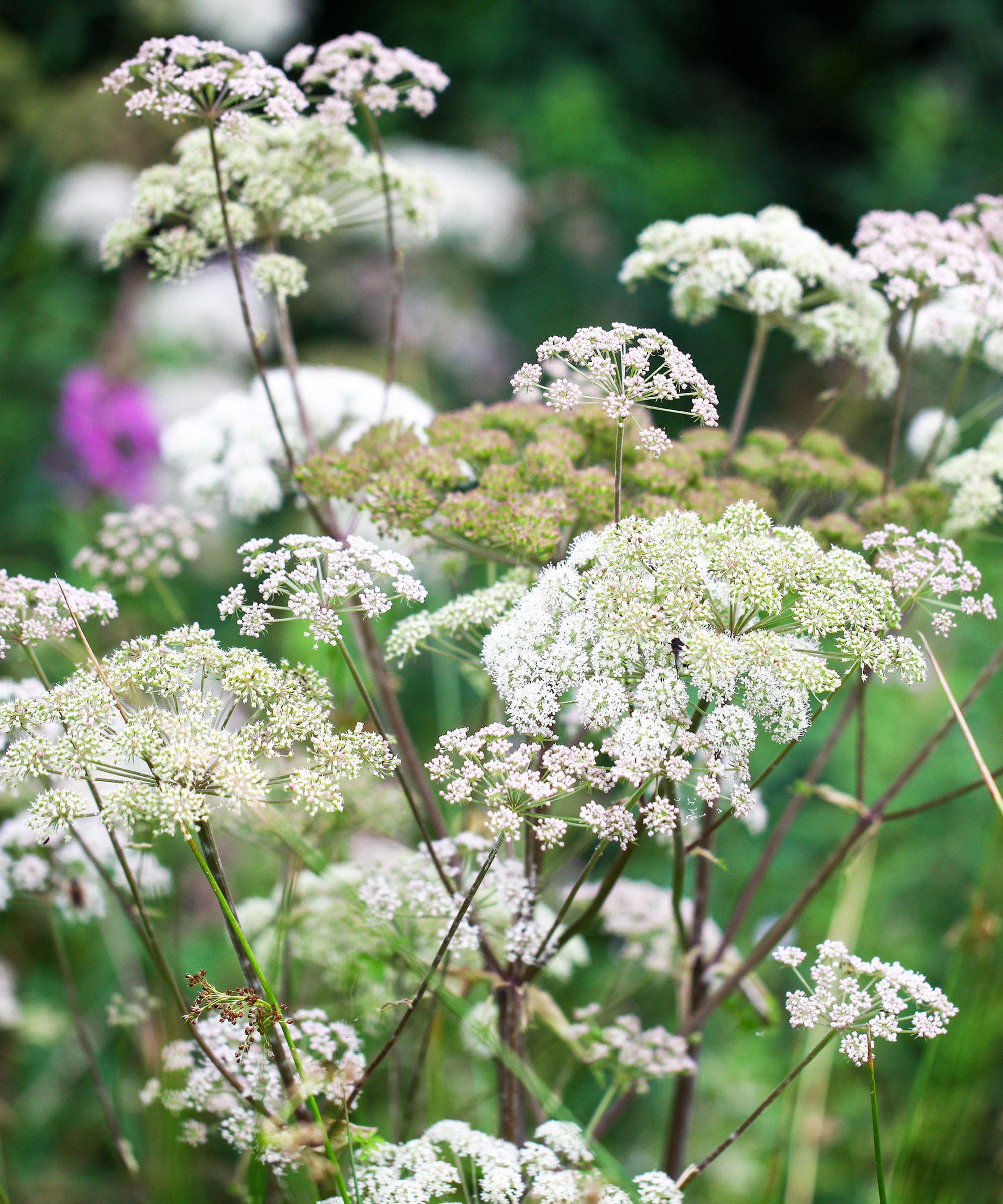
- Hardiness: USDA 6b-7a (UK H6)
- Height: 3.9ft (1.2m)
- Spread: 2ft (60cm)
- Best for: pale green dye
The scent of cow parsley on the breeze is one of the markers of summer and, as it’s a common wild plant, you’re likely to find clouds of it in meadows and along the edges of woodlands and roads.
With the growing trend for rewilding and planting palettes becoming more naturalistic, it is also increasingly popping up in gardens, often as A. ‘Ravenswing’, a form with sultry, dark stems – a good contrast to the white umbels. A vigorous self-seeder, it is also great for pollinators.
Flowers, stems and leaves can all be used to produce a pale green dye – simply chop up and simmer for about an hour before adding your fibre.
9. Madder (Rubia tinctorum)
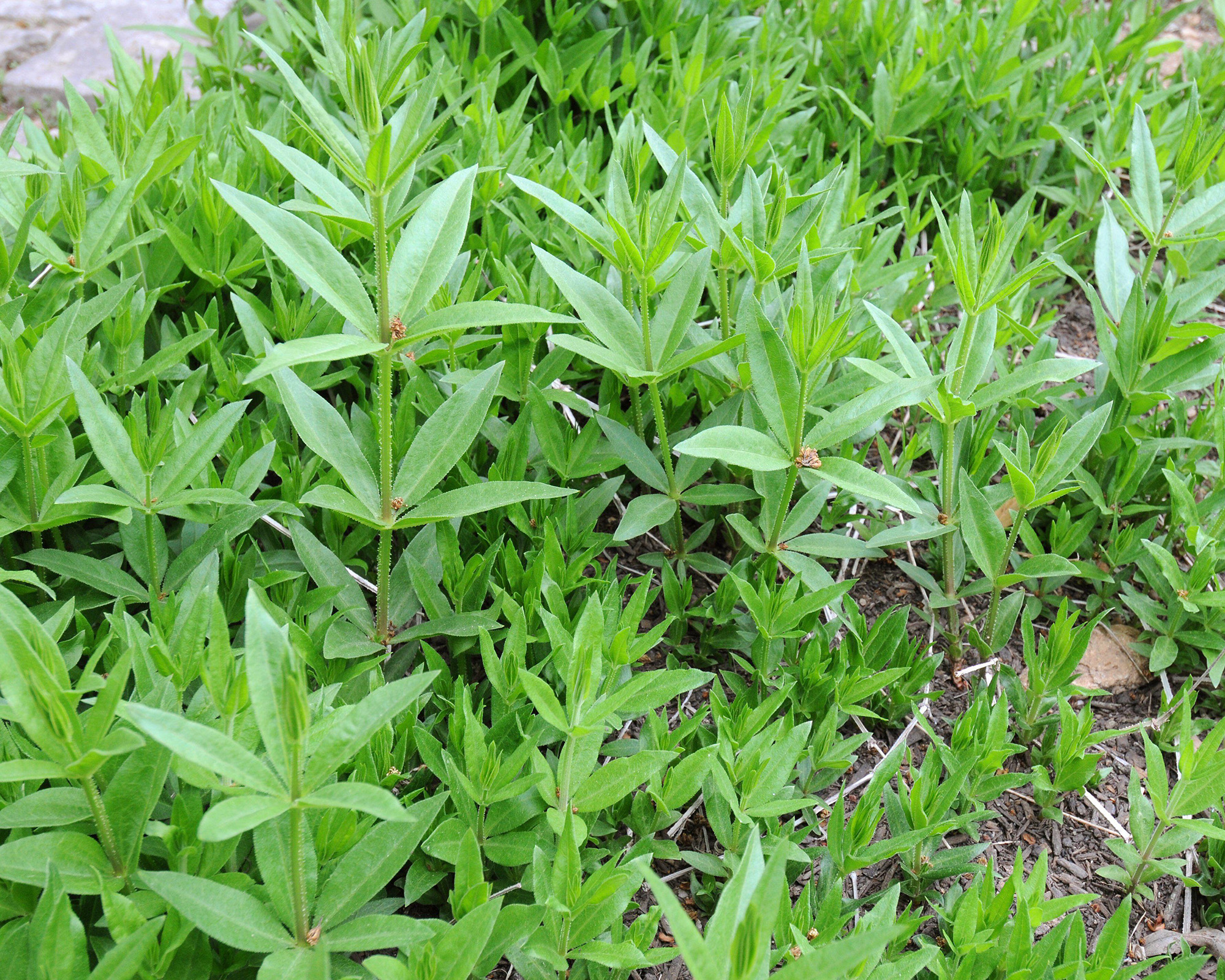
- Hardiness: USDA 5-9 (UK H4)
- Height: 3.3ft (1m)
- Spread: 3.3ft (1m)
- Best for: red dye
With its weedy habit, prickly leaves and tiny yellow flowers, this perennial plant doesn’t look like much, but to see the attraction, you need to look underground at its long, snaking roots. A vivid red, these are a rich source of alizarin, a red dye which has been in use for thousands of years, with traces found in the tomb of Tutankhamun.
The roots can be harvested when they are pencil-thick (usually when the plant is between two and five years old) and should be washed of soil, chopped and then steeped in water. Using cold water can produce more vivid colors. Grows best in light, sandy soil in full sun.
10. Dyer’s Broom (Genista tinctoria)
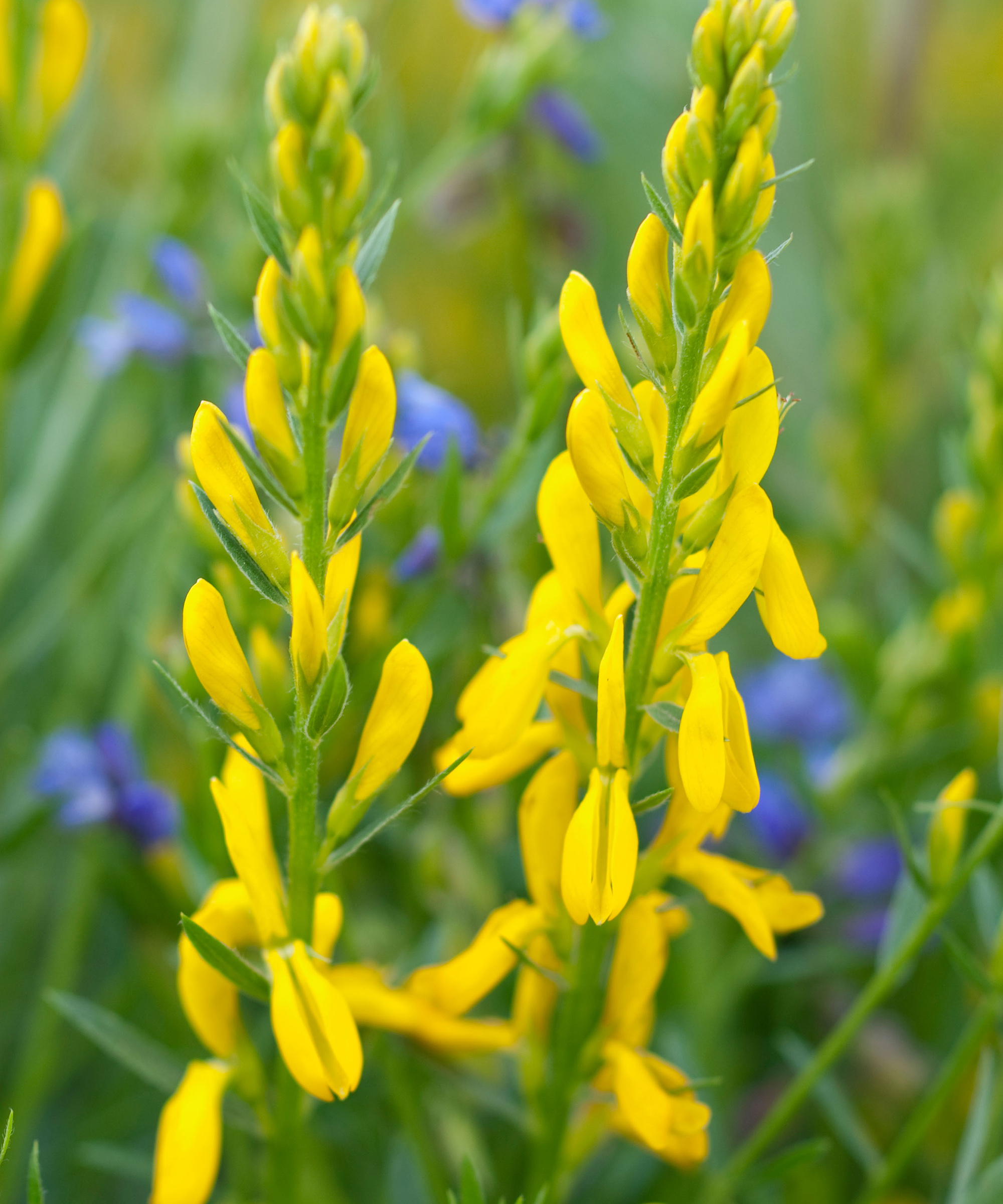
- Hardiness: USDA 4-7 (UK H6)
- Height: 3.3ft (1m)
- Spread: 3.3ft (1m)
- Best for: yellow dye
In full flower, this plant, a deciduous shrub, is a mass of golden blooms and an excellent source of luteolin, which produces a yellow dye or, when mixed with woad, a vibrant green. Typically found in chalky, grassy habitats it works well in gravel gardens or a low-maintenance flowerbed. Plant it in poor soil in a sunny spot for best results.
The whole plant can be used for dyeing, though the flowers and young shoots give the best yellows. G. ‘Royal Gold’ has an Award of Garden Merit from the RHS and is shorter and more upright-growing than the species.
11. Goat willow (Salix caprea)
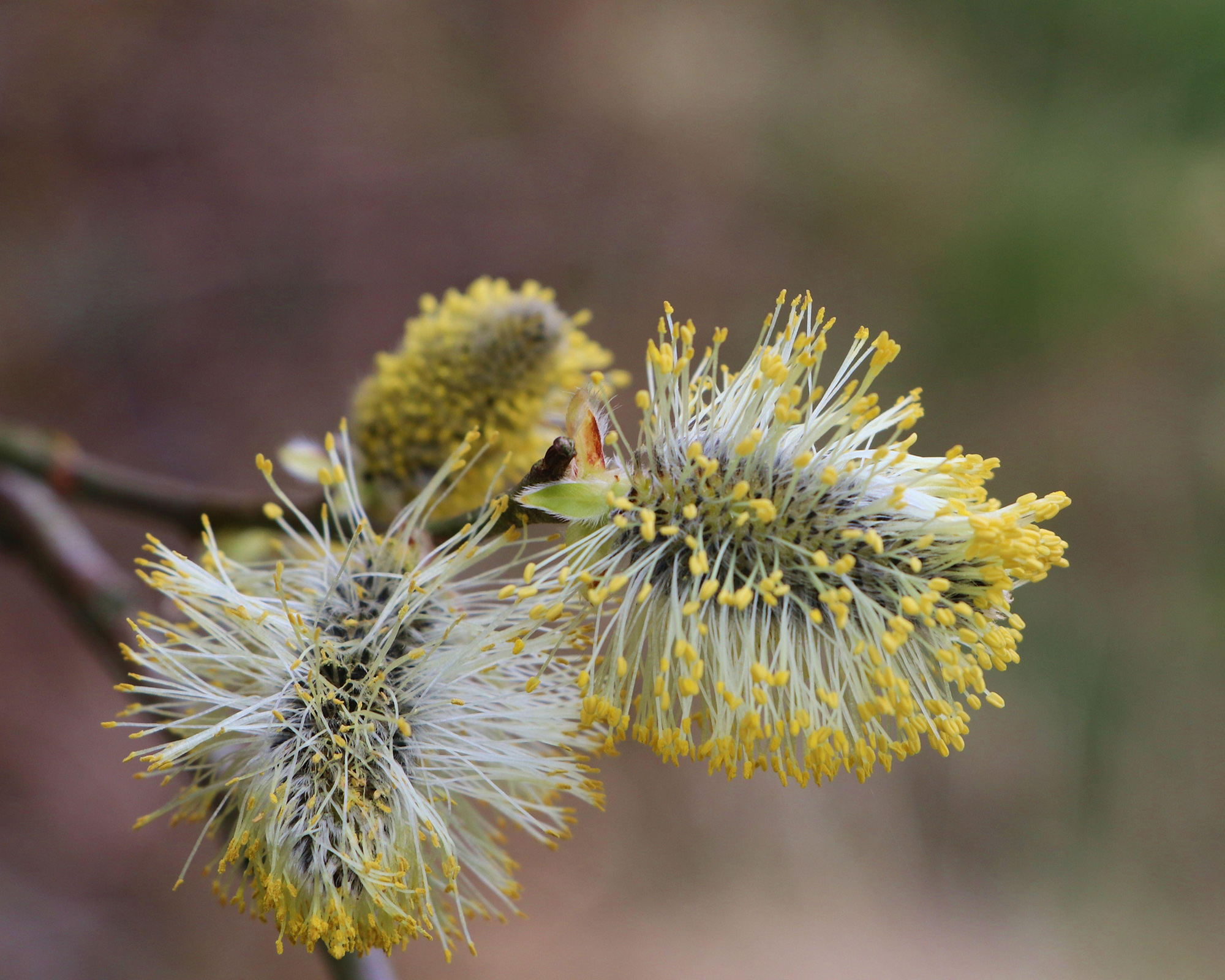
- Hardiness: USDA 4-9 (UK H6)
- Height: 32.8ft (10m)
- Spread: 19.7ft (6m)
- Best for: pink dye
Several trees have useful bark for dyeing including birches, eucalyptus, oaks and willows. Typically, they’ll need soaking for a few days before they are simmered to produce a dye but, because they contain such high levels of tannins, they won’t need any mordants.
There are over 300 salix species, from Salix alba ‘Caerulea’ (used for English cricket bats) to Salix babylonica, the huge weeping willow tree and Salix alba subsp. vitellina ‘Britzensis’, a small shrub with striking orange-scarlet stems in winter.
Dyers often use Salix caprea or goat willow which produces an attractive range of pink dyes. All grow best in moist, well-drained soil in full sun, and are easy to propagate by cuttings.
12. Yellow flag iris (Iris psuedacorus)
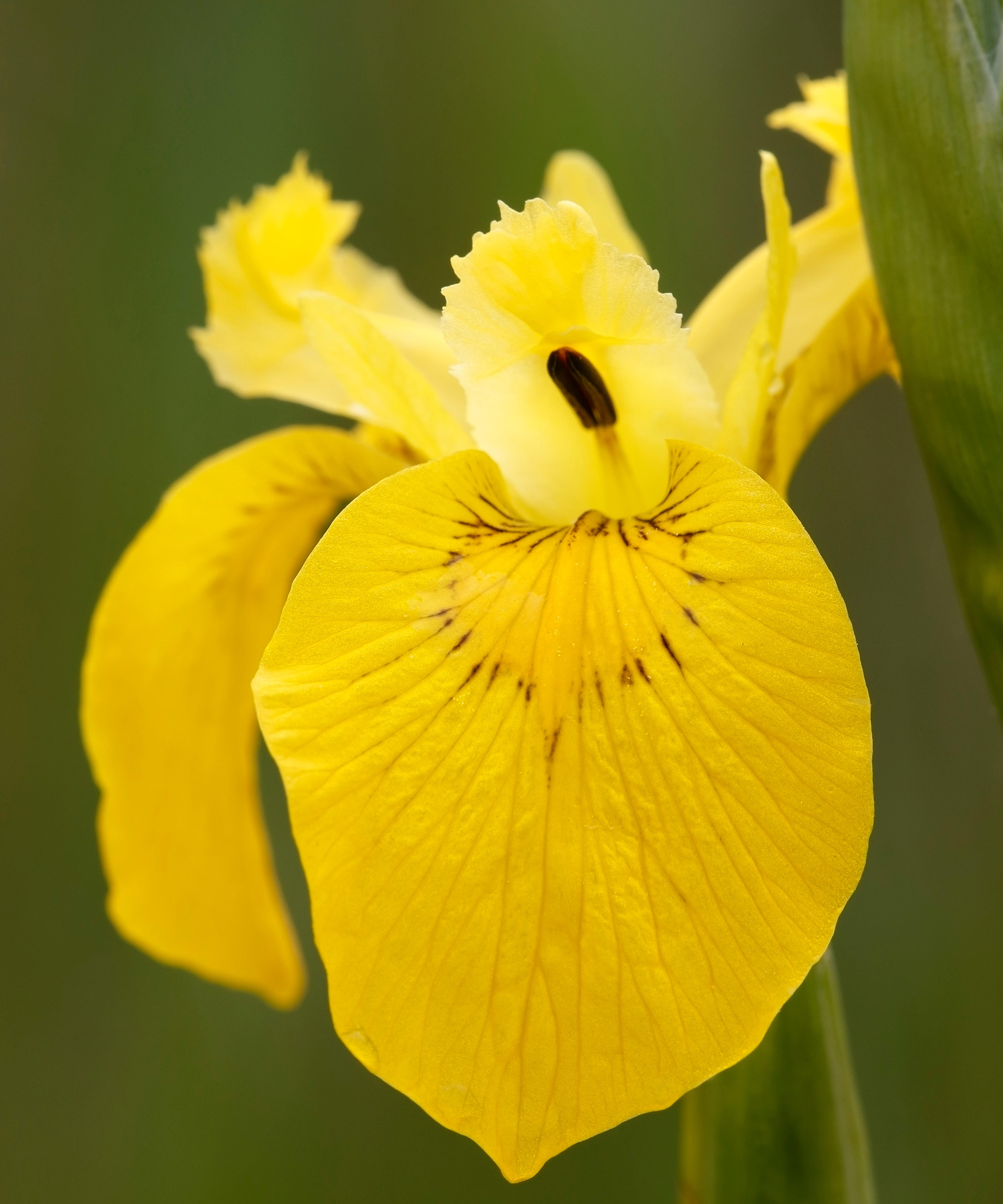
- Hardiness: USDA 5-8 (UK H7)
- Height: 4.9ft (1.5m)
- Spread: 6.6ft (2m)
- Best for: black or yellow dye
Irises are one of the most beautiful garden plants as well as one of the best dye plants, flowering briefly but seductively in late spring and early summer. Unlike most irises which need a warm, sunny spot and well-drained soil, Iris pseudacorus likes moist conditions, thriving at the edges of streams and ponds in bog gardens.
Dyers use the plant in two ways – the lemon yellow flowers produce a good yellow hue while the rhizomes can be steeped in water and then mixed with iron water (or ferrous sulphate powder) to give a black. After flowering has ended, simply divide the rhizomes with a spade, leaving one part undisturbed to grow on and using the other for your dye bath.
Do all plants produce dyes?
There are many plants that will produce a color of some sort, but, like lavender, they might be weak or not color-fast. However, through experimenting with mordanting and modifying, a whole rainbow of colors opens up. ‘It’s trial and error,’ says Kate Turnbull, Head of Textiles at Headington School, ‘but that’s the joy of it. The results you get are often entirely unexpected.’
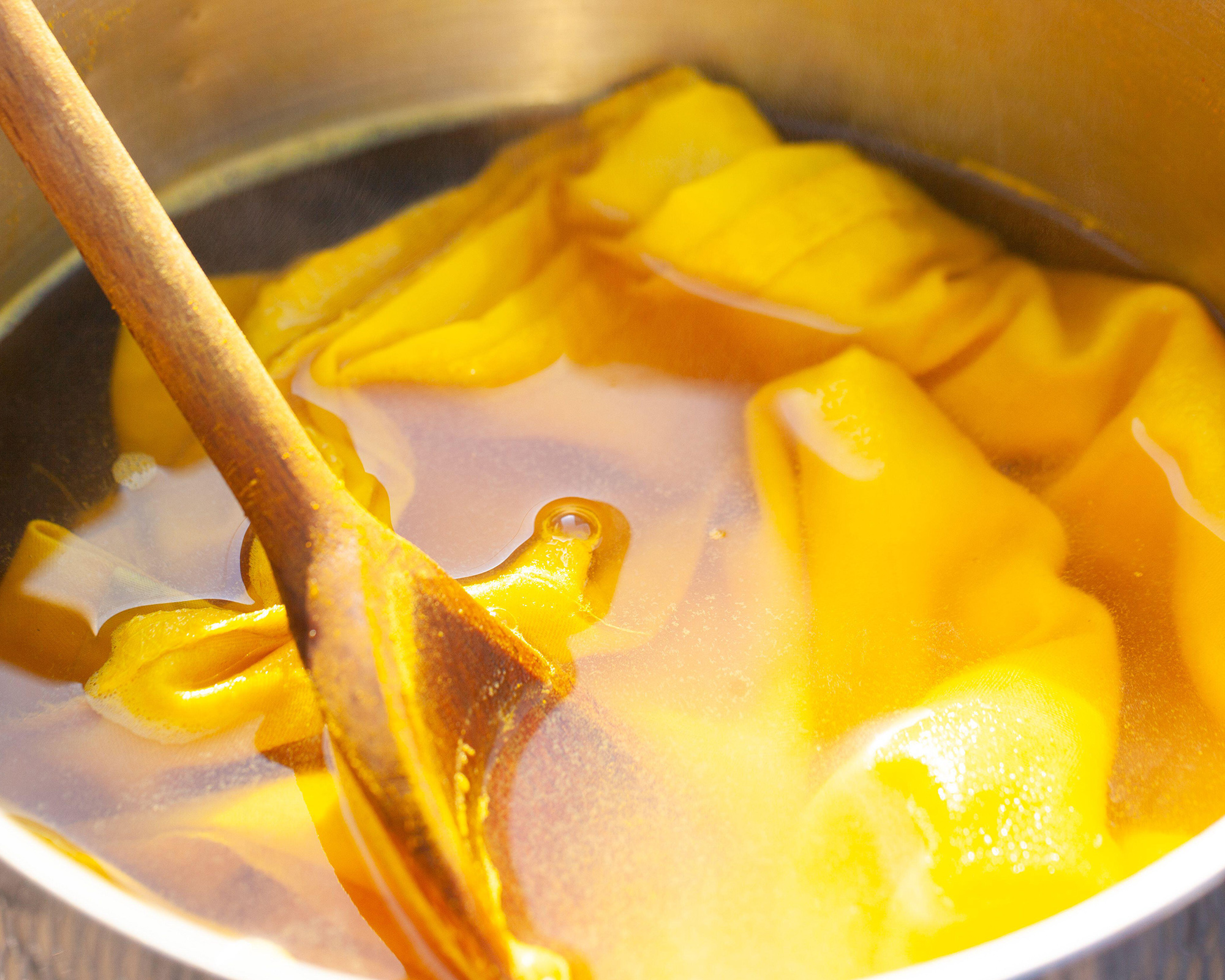
What vegetables can be used for dye?
Yes, you’d be surprised at just what you can use. Onion skins produce rich yellow and rusts, avocado stones give soft, delicate pinks, while black tea can give tones ranging from soft beige to almost charcoal.
Foraged plants work a treat too – nettles produce khakis and warm greys, for example.

Natasha is a writer, editor, publisher and curator, and writes regularly for titles including Gardens Illustrated, Elle Decoration and Country Life among others. She has worked with award-winning garden designers Luciano Giubbilei and Arabella Lennox-Boyd and with the Boglione family at Petersham Nurseries on their recent books.
